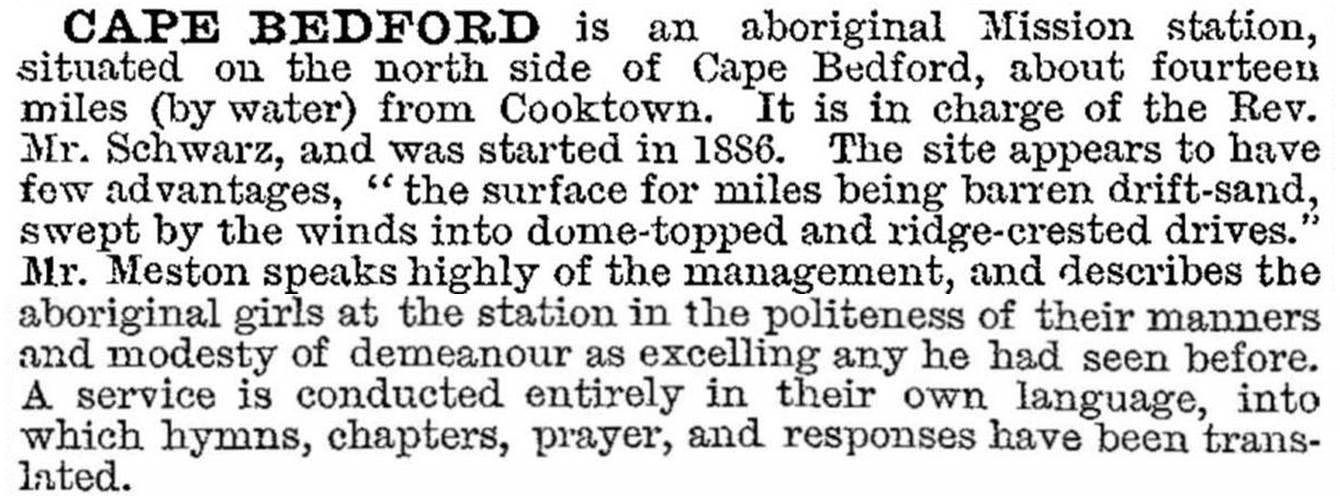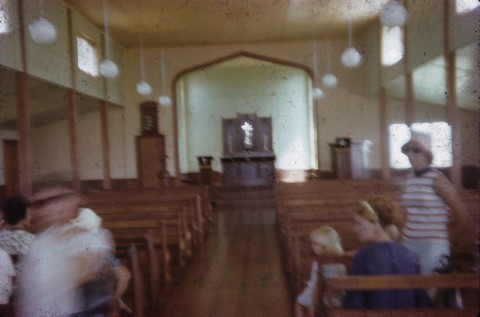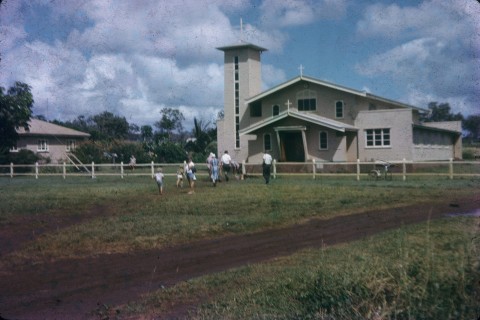Hope Vale, a rural town, is 45 km north-west of Cooktown. Its origin was a Lutheran mission (Hope Valley) at Cape Bedford, east of Hope Vale. Some of the inhabitants are from the local Guugu Yimithirr Tribe while others come from elsewhere in Queensland.
Cape Bedford was described in the 1903 Australian handbook:

During World War II Indigenous people in the Hope Valley and Cape Bedford areas were moved to Woorabinda and in 1949 the survivors were transferred back to a newly established Lutheran mission at the future site of Hope Vale. The mission continued until 1986 when a deed of grant in trust was made in favour of the Aboriginal community.
In 1997 a Native Title determination conveyed 110,000 ha of land to the Warra people of the Hope Vale community, including Cape Flattery where Mitsubishi has mined high quality silica since 1967. Royalties go to the Hope Vale Community Council.
Between Hope Vale and Cape Flattery lies Elim Beach, where there are spectacular coloured sands. It was at Elim Beach that the first Lutheran mission was established in the 1880s, partly to house Aboriginal people dispossessed by the Palmer River gold mining. The internment of the mission's superintendant led to the Aborigines being removed to Woorabinda in 1942. Eric Deeral (1932-), Queensland's first Aboriginal parliamentarian was born at Hope Vale, and Noel Pearson (1965-) grew up on the mission. As Director of the Cape York Institute for Policy and Leadership (2004-2009), Pearson has been an advocate of Aboriginal self-sufficiency and has often criticised both Federal and State Government policies. In 2009 he attacked the Queensland Government's 'wild rivers' Act because it would prevent economic development of river areas and undermine opportunities for self-sufficiency.
The Hope Vale Community Council administers the Hope Vale Shire, formed in 2004. The town has a store, a hotel, a primary school (1949) and an impressively steepled Lutheran church. A jointly federal/state-funded Hope Vale Cultural Centre opened in 2009 and Indigenous elders in Hope Vale offer guided tours to some of the community's rock art sites.
Its census populations have been:
| Census Date | Population |
|---|---|
| 1954 | 133 |
| 1981 | 489 |
| 1991 | 823 |
| 2006 | 765 |
| 2011 | 1005 |
In the 2011 census 93.3% of residents were Indigenous people.
F.O. Thiele, One hundred years of the Lutheran Church in Queensland, Brisbane, United Evangelical Lutheran Church in Australia, Publication Committee of the Queensland District, 1938
Noel Pearson, Up from the Mission, Melbourne, Black Ink, 2009


